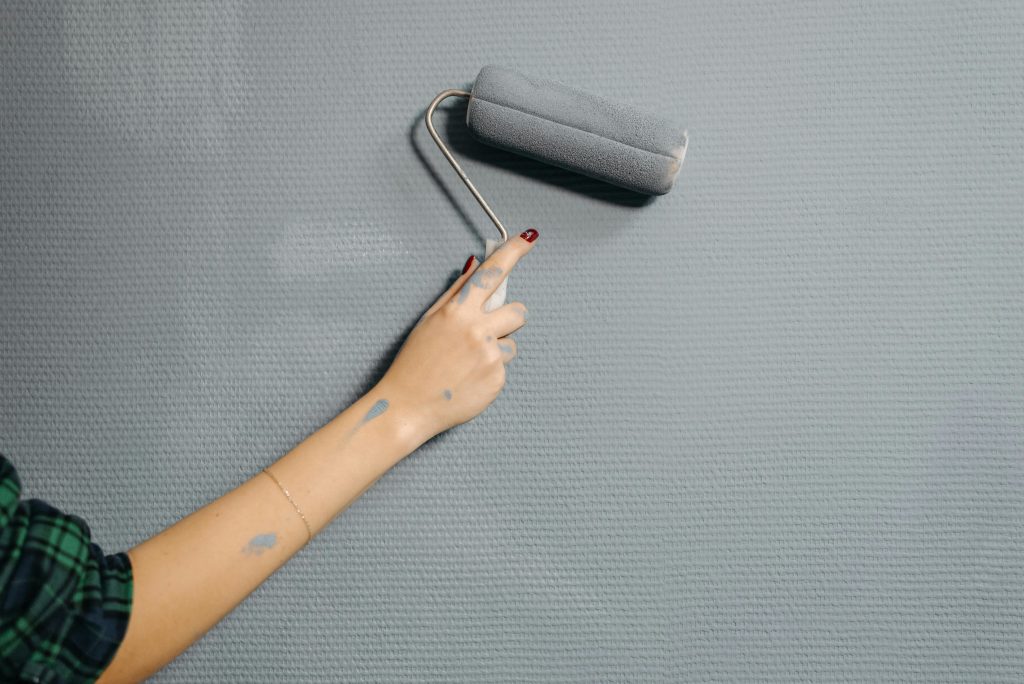Imagine this: you finally decide to give your Maryland home a fresh new look with a beautiful coat of paint. You select the perfect color, invest time and effort into preparation, and hire a skilled painter to bring your vision to life. But just months later, relentless rain, sticky humidity, or even the heavy snow have started to chip, peel, and fade your freshly painted walls. Frustrating, isn’t it?
This scenario isn’t rare for homeowners in Maryland, where the variably harsh weather, marked by heavy rainstorms, muggy summers, and snowy winters, can quickly undermine even the best painting jobs. That’s why mastering Residential Painting in Maryland requires more than just slapping on any paint. It demands a deep understanding of weather-resistant solutions tailored to the state’s unique climate challenges.
In this article, you’ll learn everything you need to know to protect your Maryland home’s beauty through smart residential painting techniques. We’ll explore the best types of weatherproof paints and primers specifically formulated to combat rain, humidity, and snow. You’ll discover practical preparation tips to ensure the paint adheres properly, from cleaning and sanding surfaces to selecting the right day for painting. Plus, we’ll reveal how proper maintenance can extend the lifespan of your paint job even in the face of the Mid-Atlantic weather rollercoaster.
Whether you’re a homeowner tired of peeling paint or a residential painter eager to improve your craft, this guide will equip you with actionable advice. By the end, you’ll confidently approach your next painting project in Maryland knowing how to shield your home’s exterior from the state’s unpredictable weather, making your investment last for years to come.
Ready to unlock the secrets of weather-resistant residential painting? Let’s dive in and turn your Maryland home into a resilient, beautiful haven, no matter what nature throws its way.
Table of Contents
Toggle🔑 Key Takeaways
- Maryland’s climate demands resilience.
Frequent rain, humidity, and snow require specialized paints designed to withstand moisture and temperature fluctuations. - Paint is more than decoration—it’s protection.
Quality residential painting acts as a weather-resistant barrier, shielding your home from water damage, mold, and UV exposure. - Surface prep determines success.
Cleaning, sanding, repairing, and priming ensure strong adhesion and prevent premature peeling or cracking. - Choose weather-adaptive paints.
Acrylic latex formulas with breathable, mildew-resistant properties are ideal for Maryland’s wet and humid environment. - Timing is everything.
Paint during dry, mild weather for optimal drying and bonding, avoiding rain or extreme temperatures. - Snow and freeze-thaw cycles test durability.
Elastic, flexible coatings expand and contract with the weather, preventing cracks and flaking. - Maintenance extends lifespan.
Regular inspections, gentle cleaning, and touch-ups preserve color vibrancy and structural protection. - Invest in quality and expertise.
Professional-grade materials and skilled application deliver long-term savings and year-round curb appeal.
Why Residential Painting in Maryland Demands Weather-Resistant Solutions
When it comes to residential painting, the unique climate challenges posed by Maryland’s weather cannot be overlooked. Maryland is known for its diverse climate patterns, ranging from heavy rainfall and high humidity in the summer to snowfall and freezing temperatures in the winter. These weather elements make residential painting a critical maintenance task that requires advanced, weather-resistant solutions to protect homes effectively.
Residential painting is more than just an aesthetic upgrade; it acts as a shield against natural weather adversities. Without the right paint and application techniques, surfaces can crack, peel, or deteriorate rapidly, leading to costly repairs and damage to the property’s structural integrity.
According to the National Association of Home Builders, improperly protected exteriors can increase maintenance costs by up to 20% over a decade. In Maryland, where the average annual rainfall exceeds 40 inches and the relative humidity often hovers around 70%, traditional paints are frequently challenged. Homeowners who invest in weather-resistant residential painting solutions can extend the lifespan of their exterior surfaces, reducing the frequency of costly repainting.
Take the example of the Johnson family, who live just outside Baltimore. After years of dealing with chipped and peeling paint caused by Maryland’s humid summers and sudden winter snowfalls, they turned to expert contractors specializing in weather-adaptive painting solutions. By choosing advanced, breathable paints with moisture-resistant properties and applying them during the optimal weather window, their home’s exterior remained vibrant and intact for over seven years, significantly longer than their previous paint jobs. This experience illustrates how tailored residential painting that considers local climate conditions not only preserves the beauty of a home but also safeguards its value.
In conclusion, residential painting in Maryland requires a strategic approach that prioritizes weather-resistant paints and techniques. Understanding the state’s rain patterns, humidity levels, and snowfall helps homeowners select durable materials that withstand these elements, ensuring homes remain protected and beautiful year-round.
Tips for Successful Residential Painting in Maryland: Weather-Resistant Solutions for Rain, Humidity, and Snow
✅ Choose High-Quality Exterior Paint: Use paint specifically formulated for Maryland’s climate to resist rain, humidity, and snow damage.
✅ Prepare Surfaces Thoroughly: Clean, sand, and prime surfaces to ensure paint adheres well and withstands moisture fluctuations.
✅ Time Your Painting Right: Aim to paint during dry spells and moderate temperatures to maximize drying and curing effectiveness.
✅ Use Waterproof Sealants: Apply a clear waterproof sealant over painted surfaces to add an extra layer of protection against moisture.
✅ Select Mold- and Mildew-Resistant Paint: Combat Maryland’s humidity by using paints with built-in antimicrobial properties.
✅ Maintain Gutters and Drainage: Ensure water flows away from painted surfaces to prevent water stains and wood rot.
✅ Inspect and Repair Before Painting: Fix cracks, holes, and damaged wood to prevent water infiltration that can peel paint later.
✅ Apply Multiple Coats: Use two or more coats for durability, making sure each layer dries completely before the next.
💡 Extra Tip: Invest in professional consultation for the best paint type and weather-resistant techniques tailored to your specific Maryland location.

Key Concepts
Residential painting is far more than just an aesthetic endeavor; it is a critical protective shield that buildings wear against the persistent forces of nature. In Maryland, where the climate oscillates dramatically with wet springs, humid summers, and snowy winters, understanding the core concepts behind weather-resistant residential painting becomes essential, not only to maintain a home’s beauty but to ensure its longevity and structural integrity.
1. The Role of Paint as a Weather-Resistant Barrier
Imagine paint as a raincoat for your house, it’s the first line of defense that shields the structure from the harsh elements. In Maryland’s case, this “raincoat” must be exceptionally adept at repelling moisture while allowing the building materials to breathe. This balance prevents the suffocating trap of humidity, which can otherwise lead to peeling, blistering, or mold growth. The barrier formed by high-quality, weather-resistant paint is not just a surface layer but a semi-permeable membrane that negotiates the indoor and outdoor climates.
2. Moisture Dynamics: Rain and Humidity
Maryland’s frequent rains behave like a relentless symphony on every rooftop and siding, making moisture management pivotal. When the paint fails to repel water effectively, moisture seeps into the wood or masonry beneath, initiating cycles of swelling and shrinking that eventually crack the paint tapestry. Metaphorically, it’s akin to water finding tiny cracks in a fortress’s walls, once inside, it weakens the whole structure.
Humidity further complicates this by acting like an invisible cloak of dampness that encourages microbial growth and chemical changes in the paint composition. Effective residential painting solutions harness paint formulations that integrate moisture-blocking agents and fungicides, ensuring that the home’s exterior remains robust under constant atmospheric pressure.
3. The Interplay of Snow and Freeze-Thaw Cycles
Snow introduces a unique challenge, serving as both coolant and moisture reservoir. When snow melts into water, it saturates paint and underlying materials. Coupled with Maryland’s freeze-thaw cycles, where water repeatedly freezes and expands, this moisture can exacerbate cracks and cause paint to flake off akin to how ice wedges open fissures in mountain rocks.
A weather-resistant residential paint system considers these natural expansions and contractions. It works to maintain elasticity in the paint film, enabling it to stretch and rebound rather than crack under these physical stresses, thus maintaining a continuous protective surface even under shifting thermal conditions.
4. Surface Preparation and Paint Adhesion: The Invisible Foundation
Before any brush touches a wall, the unsung hero of quality residential painting is surface preparation, which, conceptually, can be compared to preparing fertile soil before planting. No matter how advanced the paint technology, poor adherence due to inadequately cleaned or primed surfaces leads to premature failures.
For Maryland’s environment, removing mildew, old paint residues, and accumulated grime creates a clean canvas that allows paint to bond intimately with the siding or masonry. This bond is vital because strong adhesion empowers the paint layer to act as a seamless armor against water infiltration and freeze damage throughout the year.
5. The Science of Paint Types and Formulations
Not every paint is created equal, especially in a climate as variable as Maryland’s. Acrylic latex paints, for example, are often favored for their superior flexibility, water resistance, and breathability. Their polymer chains form a resilient web that embraces expansion and contraction without relinquishing the wall’s protection.
Conversely, oil-based paints have different resistance and adhesion qualities, sometimes useful for their hard, glossy finish but less ideal where flexibility is paramount. The selection of paint thus becomes a strategic decision tuned to environmental demands, thinking of it as choosing the right fabric for a coat designed to withstand both downpour and snowfall.
6. Longevity and Maintenance: The Sustainability of Protection
Conceptually, weather-resistant residential painting is an ongoing narrative rather than a single event. Like tending a garden where each season challenges growth, periodically renewing the protective paint layers adapts the home’s defense system to evolving environmental wear.
This sustained stewardship ensures that the house remains a safe haven amidst Maryland’s erratic weather patterns, preserving not only curb appeal but reducing repair costs related to moisture damage, wood rot, and mildew infestation.
These interwoven concepts frame the multidimensional approach required for effective residential painting in Maryland. By viewing paint not merely as decoration but a dynamic, responsive armor, homeowners and professionals alike can appreciate the intricate science and art behind weather-resistant solutions that stand strong against rain, humidity, and snow.
Frequently Asked Questions
❓ What makes residential painting in Maryland challenging due to the weather?
Maryland experiences a wide range of weather conditions, including heavy rain, high humidity, and snow. These elements can cause paint to peel, crack, or fade quickly, making it essential to use weather-resistant paints and proper application techniques tailored to Maryland’s climate.
❓ Which types of paint are best suited for Maryland’s rainy and humid climate?
For Maryland’s rainy and humid weather, using high-quality acrylic latex paints is ideal because they offer excellent breathability and resistance to moisture. Additionally, paints with mildew-resistant properties help prevent mold growth caused by humidity.
❓ How can I prepare my home for exterior painting in snowy or wet conditions?
Proper surface preparation is crucial. Ensure the surface is clean, dry, and free of any peeling paint or dirt before painting. It’s best to schedule painting projects during dry periods and to use primers specifically designed for damp or cold conditions to improve paint adhesion and durability.
❓ How long does weather-resistant paint typically last on residential properties in Maryland?
When applying weather-resistant paints correctly, you can expect the paint job to last between 7 to 10 years, depending on exposure and maintenance. Regular inspections and touch-ups help extend the life of your residential painting against Maryland’s rain, humidity, and snow.
❓ Can I paint my home exterior myself to withstand Maryland’s weather, or should I hire a professional?
While DIY painting is possible, hiring a professional experienced with Maryland’s unique weather conditions is recommended. Professionals know how to select the right materials and apply coatings under ideal conditions, ensuring a durable, weather-resistant finish that protects your home year-round.


